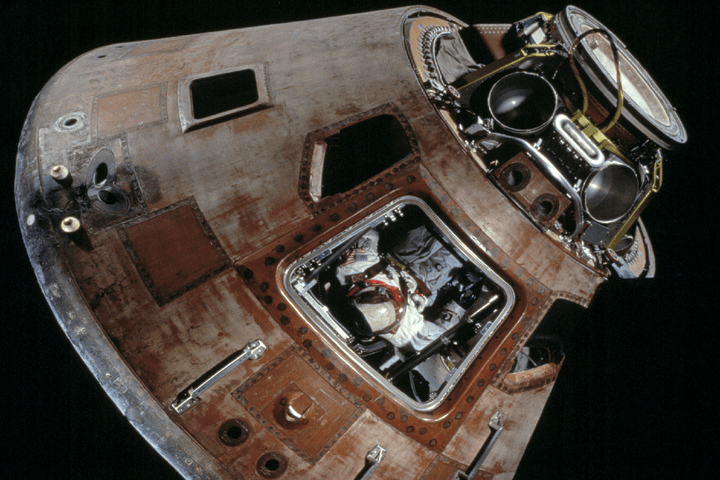
The capsule, Columbia, is set to leave the Smithsonian’s National Air and Space Museum for the first time in 46 years for a traveling exhibition called, “Destination Moon: The Apollo 11 Mission.”
The capsule is an important part of U.S. space exploration history, as it’s the only surviving section of the spacecraft that transported the first astronauts to the moon — and back again.
The cross-country exhibition will celebrate the approaching 50th anniversary of the historic moon landing, and promises to wow visitors with an array of exciting exhibits. In the Smithsonian’s own words:
Through original Apollo 11-flown objects, models, videos and interactives, visitors will learn about the historic journey of the Apollo 11 crew — Neil Armstrong, Michael Collins and Buzz Aldrin. “Destination Moon” will include an interactive 3-D tour, created from high-resolution scans of Columbia performed at the Smithsonian in spring 2016. The interactives will allow visitors to explore the entire craft including its intricate interior, an interior that has been inaccessible to the public until now.
The Apollo 11 spacecraft comprised three parts: The command module that held the astronauts and returned to Earth; the service module, which supported the command module with propulsion, electrical power, oxygen, and water; and the lunar module, nicknamed Eagle, that included a lower stage for getting Neil Armstrong and Buzz Aldrin to the moon’s surface and an upper stage that took the astronauts back to lunar orbit so they could return to Columbia.
Columbia’s first stop on its two-year tour to celebrate the first moon landing in 1969 will be Houston’s Space Center on October 14, 2017. Visitors will have until March 18, 2018, to marvel at the capsule before it moves on to the Saint Louis Science Center from April 14, 2018, through September 3, 2018.
The following stop will be at the Senator John Heinz History Center, Pittsburgh, from September 29, 2018, through February 18, 2019. Finally, Seattle’s Museum of Flight will host the Apollo 11 command capsule from March 16, 2019, through September 2, 2019.
Once the road trip is over, Columbia will return to Smithsonian’s National Air and Space Museum in Washington, D.C., and take its place in a new exhibition that’s set to open in 2021.
Editors' Recommendations
- SpaceX just launched a moon mission that could enter the history books
- How to watch SpaceX launch NASA’s Lunar Flashlight mission
- SpaceX Crew-5 mission prep impacted by approaching storm
- Snoopy is heading to space on NASA’s Artemis I moon mission
- SpaceX private moon mission has eight free seats up for grabs


